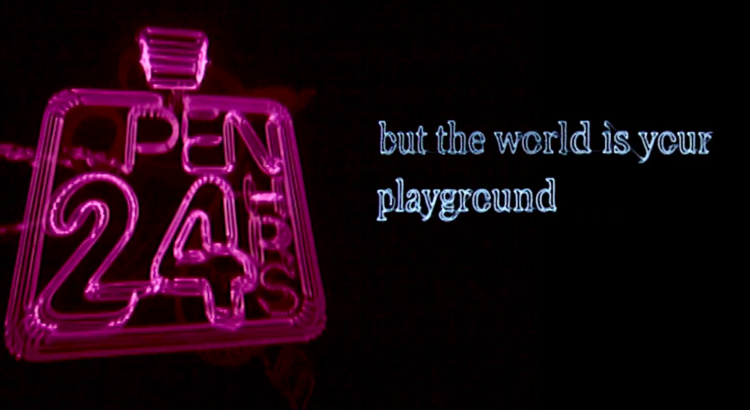I attended one of the free performances put on by the 2021 Ann Arbor Film Festival, The Room Presumed by Scott Kiernan. Just from the description on the Ann Arbor Film Festival website, I wasn’t quite sure what I was watching exactly, but I was intrigued by the idea of watching something created with machine learning.
In this piece, trippy visuals set on the backdrop of a black screen are  accompanied by text that appears sentence by sentence. When the performance began, I was unsure of when the “real” performance would start and assumed I was seeing human-written words appear on my screen. My confusion deepened when at random points, the script would suddenly make no sense, or repeat phrases, and then return to a seemingly “normal” cadence.
accompanied by text that appears sentence by sentence. When the performance began, I was unsure of when the “real” performance would start and assumed I was seeing human-written words appear on my screen. My confusion deepened when at random points, the script would suddenly make no sense, or repeat phrases, and then return to a seemingly “normal” cadence.
If you’ve ever played around with artificial intelligence (AI) poem generators or AI meme generators (This Meme Does Not Exist), you might recognize these glitches as trademark giveaways of tech-created text. Or perhaps it’s just an innate disposition to be able to tell when something just doesn’t sound human. Once it fully clicked that this was probably a machine-written script, I couldn’t tell if I was more disturbed or less disturbed by it.
I crashed the day’s afterparty for the Ann Arbor Film Festival on gather.town, which I had never been on–a site where participants are avatars, and your proximity to other avatars determines how much you can see or hear them. I accidentally found myself in an AAFF director chat before I found Scott Kiernan’s group and joined the conversation about what that piece really was about.
The script we experience in The Room Presumed is created by a machine learning algorithm partially trained on an early 1980’s thought experiment at Atari. During this experiment, Kiernan explained, computer scientists at Atari imagined the possibilities of virtual reality, but without the tools to do it, resorted to improvisational acting.
The end result of this machine learning script, as Kiernan explained, is to make fun of what we call immersion and reveal how non-immersive VR can be. As homage to this original thought experiment, at the end of the performance there flashes a picture of the Atari building today, an unmarked, bland corporate building. 
This piece caused me to truly think about my relationship to reality and to technology, and reminded me of an article I read about AI-”created” art. While an AI can turn out surprisingly humanlike (and disturbingly un-humanlike) pieces, what it creates is always going to be based off of the human-created content it is fed, yet that doesn’t in turn make an AI piece human-created. In a similar way, VR will always be a tech-warped version of our true reality, and therefore, as Kiernan pushes us to see, it cannot be truly immersive.



